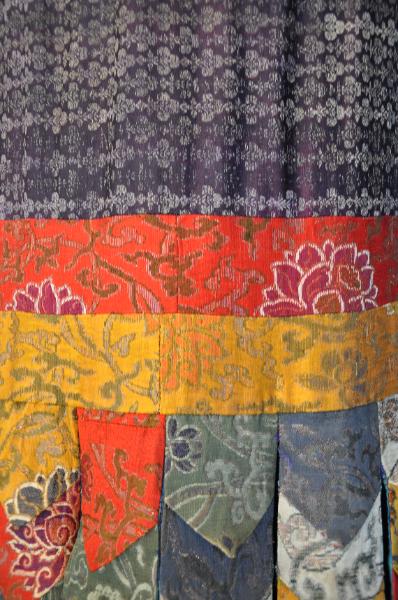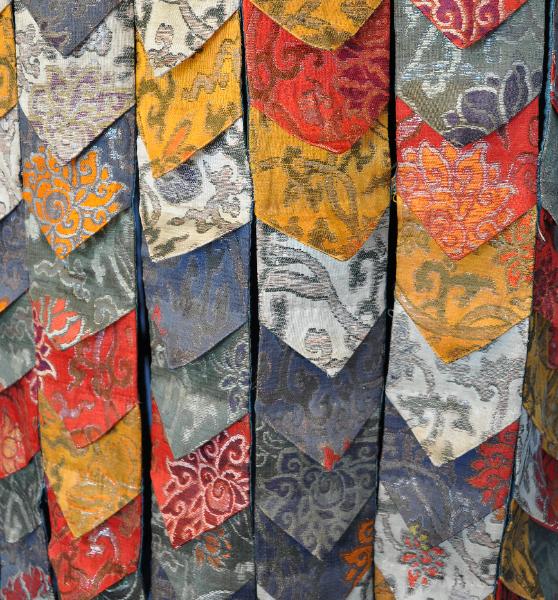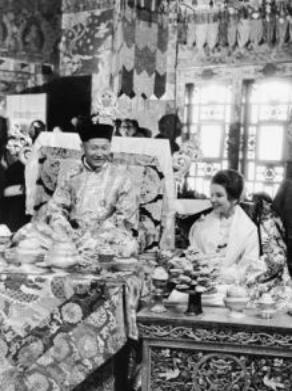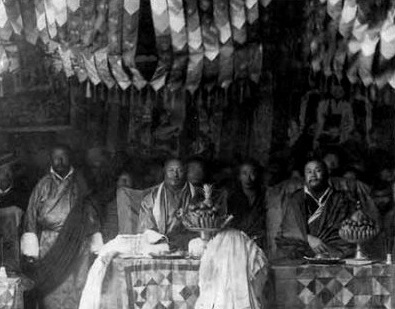
Mongolian Silk Brocade Temple Banners
Pair of Temple Banners in Chinese Silk Brocade
Mongolia
late 19th-early 20th century
height: 200cm (approx.), diameter: 50cm
This superb pair of temple banners probably is of Chinese silk brocade. They pair dates to the late 19th century or early 20th century and are in superb condition – there are no losses, tears, insect damage or repairs. They were acquired in the UK and appear to have been in the UK since colonial times. Probably this accounts for their exceptional condition.
Temple banners such as these would hang from the roof of the temple or monastery and turn with the movement of air. This evoked turning the wheel of
dharma, like the mantras spoken by the ordained, and in this way served a spiritual function as well as being decorative.
The two here are approximately two metres tall and comprise six horizontal bands of brocade and other textile, beneath which are twenty vertical bands each comprising seventeen brocade segments with folded-over triangular ends. These ends with tassels, some with small metal bells.
The brocade appears to be of Chinese origin and almost certainly was exported from China. Brocade is typically woven on a draw loom. It involves a supplementary weft technique: the ornamental aspect of the brocading is produced by a supplementary, non-structural, weft in addition to the standard weft that holds the warp threads together. This gives the finished product the appearance of having been embroidered.
The banners most probably are from Mongolia, but similar banners also were used in the Himalayas, including in Tibet, Sikkim and Bhutan.
Provenance
UK art market
References
Berger, P., & T. Tse Bartholomew, Mongolia: The Legacy of Chinggis Khan, Thames & Hudson, 1995.
Inventory no.: 1565
SOLD










The Chogyal of Sikkim (above, left), the King of Bhutan (above right) and a monastery in Bhutan (below). Each image shows use made of ceremonial banners similar in form to the examples here.
Detail.
Detail.
Detail.

